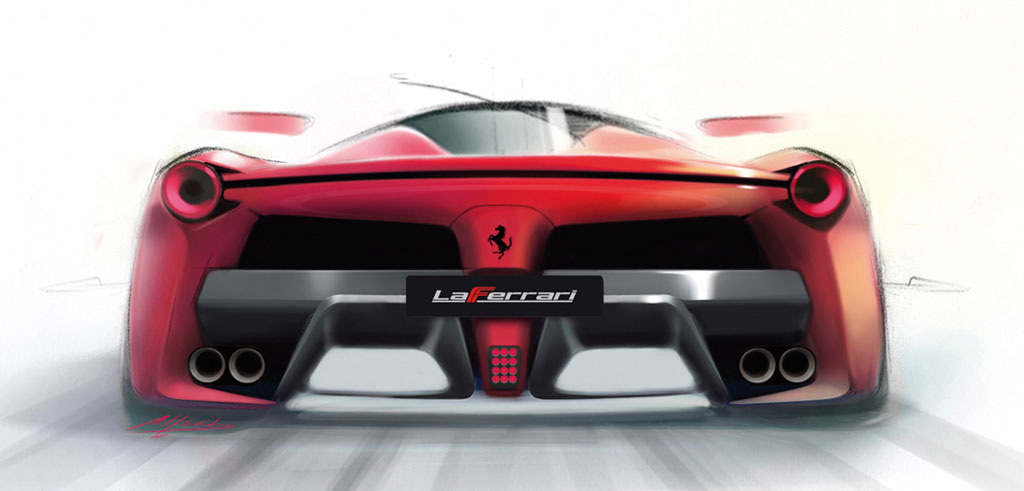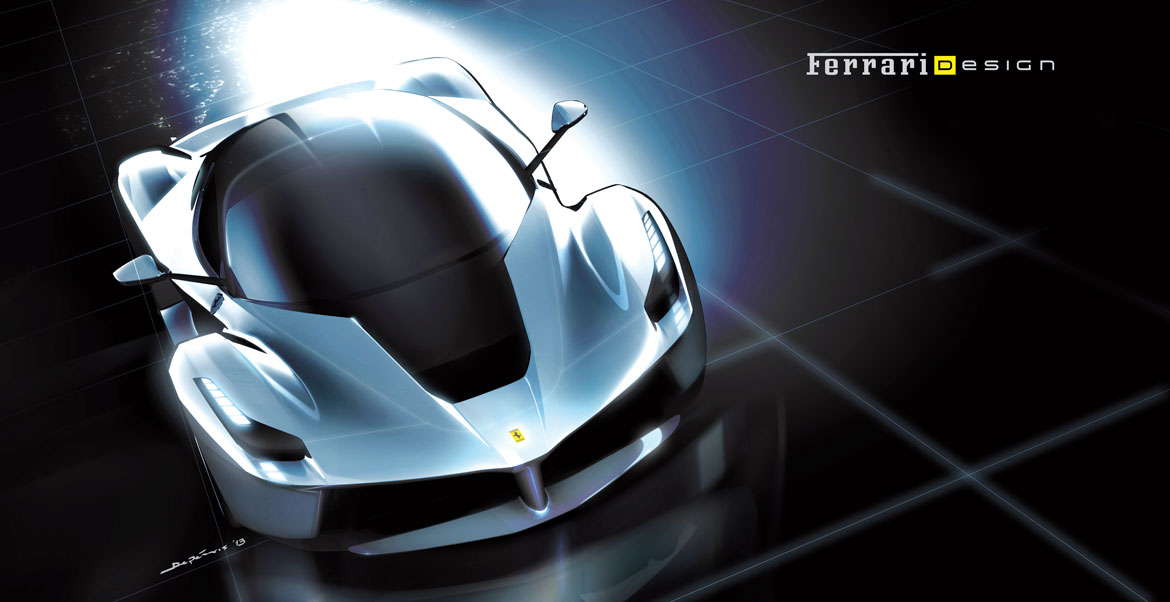The name LaFerrari is only apparently a surprise, being as it is tailor-made for the ultimate Ferrari. “We had to achieve absolute excellence, the very best combination of technical innovation and aesthetic beauty”, says design chief Flavio Manzoni, observing that the possibility of engaging organically with the company’s engineering and development divisions instilled those fundamental values into the project that have always marked the brand’s road cars. The finished result is a fascinating and visually very impressive object. Elegantly sculpted volumes conveying a sense of power to the fenders are counterpoised by light surfaces – inspired by the surface tension explored in the ‘Tensostruttura’ concept – which seem to enclose the central capsule in a protective embrace, surrounding and almost concealing the lateral radiator intakes. Naturally, the architecture follows the classic archetype of the longitudinal mid-engined 12 cylinder coupé, with the cab and engine contained within the wheelbase for perfect weight distribution.

The front, with its innovate wing suspended from a single central fin under the chin, is a direct reference to Formula 1 and further evolves the catamaran theme of the F12 Berlinetta. The pursuit of aerodynamic perfection permeates every aspect of the project, and even determined the very concept itself: “The design of this car is based on the idea of a form that is not simply carved from a solid as if it were sculpted by the air, but actually has an intimate relationship with aerodynamics”, explains Manzoni, noting how the formal language has radically changed in the transition from Ferrari’s last generation of hypercar to the LaFerrari: while the forms of the Enzo cited Euclidian geometry, with lines and intersecting surfaces, for the LaFerrari, Manzoni and his team looked to Riemann geometry, which is based on inconstant, ‘four dimensional’ surfaces, as in certain works of art by Anish Kapoor.

The cabin, on the other hand, comes straight from the racing world and is conceived to make the body of the driver an integral part of the car. The fixed seats (the steering wheel and pedal board are adjustable instead) are available in three different sizes and are mounted directly onto the structural tub, while the steering wheel, which is clearly derived from F1, takes the concept of integrated controls introduced by the Enzo to another level. “As inspiration for the architecture of the dash, we looked to the minimalist style of the P5 from 1968 and, in particular, the visually very light suspended ‘V’ motif” says Manzoni, noting how the floating wing ‘bridge’ element containing some of the transmission controls is equally light in appearance, and how certain satellite control elements (infotainment screen and controls) have been relocated to the door and to the centre of the dash. The result is an ambience with a unique and distinctive feel, which will only appear in the 499 examples of the LaFerrari destined for production.

Project chronology
The LaFerrari represents the real turning point, as it is the first car designed entirely by Centro Stile Ferrari. Directed by Flavio Manzoni, this style centre was set up in 2010 to generate in-house the concepts of future Ferrari’s and coordinate the activities conducted with the brand’s historic design partner Pininfarina. After a style study stage exploring a broad spectrum of possibilities, in October 2010 ten or so 1:4 scale models took shape. Of these proposals, five were selected (three by Ferrari’s Centro Stile and two by Pininfarina) and translated into five full scale models. By April 2011 Ferrari’s executives selected the “Manta” and “Tensostruttura” models created by the Centro Stile. The latter of these two in particular was then used as the basis for further development, which began with a new asymmetric full-scale model. Meanwhile, the design project for the interior was developed in parallel, and both the exterior and interior design were signed off in July 2012.
Full article in Auto & Design no. 200











